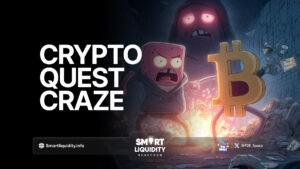Traditional Gaming Revenue Models with a Web3 Twist


The world of gaming is changing faster than ever, and the transformation brought by Web3 is giving traditional revenue models an innovative upgrade. From pay-to-play and freemium models to in-game advertising and downloadable content (DLC), Web3 is breathing new life into how players interact with games—and how developers monetize them. Let’s explore how Web3 elements like blockchain, NFTs, and decentralized ownership are enhancing, and in some cases revolutionizing, the classic ways games have made money.
Pay-to-Play and Ownership in the Digital Era
In traditional gaming, the pay-to-play model has reigned supreme, where players pay once to unlock a game. This model, though effective, limits long-term engagement and profit potential. Enter Web3: with blockchain-based ownership, players can now buy a game and actually own a piece of it. Games like The Sandbox allow players to purchase parcels of land or unique items as NFTs, creating a sense of true digital ownership. Rather than just accessing content, players invest in it, potentially earning back their investment by selling or trading items.
This twist allows players to view their purchases as assets rather than mere expenses. Imagine buying a unique weapon in an online game, knowing that its value could grow over time—and that you have the freedom to sell it in a secondary market. The Web3 twist in the pay-to-play model shifts it from a one-time payment to a long-term investment opportunity, enticing more users and creating a loyal player base.
Freemium Games with Play-to-Earn Elements
Freemium games revolutionized the industry by offering free access but charging for extras like cosmetic items, character upgrades, and power boosts. While this model is hugely successful, Web3 enhances it with Play-to-Earn (P2E) elements, where players earn digital tokens, NFTs, or other assets as they play.
In games like Axie Infinity, for instance, players earn tokens that can be converted into real-world money. Unlike in traditional freemium games, where users are often tempted to spend without a tangible return, Web3 freemium games encourage spending as an investment in earning. Players are not just paying to enhance their experience but are actively engaged in the game’s economy, creating a dynamic that empowers players and developers alike. The result? An ecosystem where both player engagement and revenue potential increase, and the game itself becomes an income-generating activity for the players.
Subscription Models with Exclusive Perks and DAO Governance
Subscription models are popular in traditional gaming, allowing players access to premium content or features for a monthly fee. In the Web3 world, subscription models can come with exclusive perks like NFT drops, early access to game updates, or even voting rights in the game’s development decisions through a Decentralized Autonomous Organization (DAO).
Take Illuvium, a Web3 game where community members have a say in the game’s evolution. Players who subscribe to the game might receive exclusive in-game items or get voting power on game changes, enhancing their experience and sense of ownership. This decentralized governance element strengthens player loyalty, as they become co-creators, helping to shape the game’s future. Instead of passive subscribers, they become active stakeholders, fostering a committed community.
In-Game Advertising with Player Incentives
In-game advertising is a lucrative model in traditional gaming, but it can sometimes disrupt the player experience. Web3 is transforming in-game advertising by making it less intrusive and even rewarding players who engage with ads.
Imagine a game where players can watch an ad in exchange for an NFT or an in-game item that they can later sell or use. By giving players control over their ad engagement, games not only reduce friction but also add value to their advertising model. The incentive approach makes players feel respected and compensated, a massive leap from traditional ads that often felt like forced interruptions.
Downloadable Content (DLC) as NFTs
DLC has long been a favorite model for games to extend gameplay and increase revenue by releasing expansions, additional storylines, or exclusive items. With Web3, DLC is evolving into the realm of NFTs. By making DLC content tradable, players can now own exclusive items or characters as NFTs that hold real-world value.
For example, consider a rare weapon released as a DLC that’s also an NFT. As players purchase it, they get not only the in-game power boost but also an asset they can trade on an NFT marketplace. This boosts the appeal of DLC, transforming it from a simple add-on purchase into a valuable collectible with an active resale market. DLC becomes a part of the player’s asset collection, creating an additional revenue stream while enhancing the game’s engagement.
Player-to-Player Marketplaces and Secondary Sales
In traditional gaming, secondary markets are often considered gray areas, with players trading game items unofficially. Web3 legitimizes and empowers these markets, creating official peer-to-peer marketplaces where players can buy, sell, and trade items securely on blockchain.
These in-game marketplaces allow players to retain the value of their items and even profit from them, adding an economic layer that keeps players invested. Games like Gods Unchained offer official platforms for players to trade cards as NFTs, ensuring safe, secure transactions. This marketplace model, made transparent and tamper-proof with blockchain, enriches the player experience while giving developers a cut of secondary sales, thereby unlocking an additional revenue stream.
Closing Thoughts: A New Era for Game Monetization
Web3 technology is taking traditional gaming revenue models and enhancing them with transparency, player ownership, and decentralized governance. By introducing NFTs, tokens, DAOs, and marketplaces, Web3 is creating a more balanced ecosystem where both developers and players benefit. These models not only make gaming more profitable but also more rewarding for players, fostering loyalty, engagement, and a sense of shared purpose.
The fusion of classic revenue strategies with the transformative power of Web3 is redefining the gaming landscape, unlocking new possibilities, and attracting a new generation of gamers eager for ownership and empowerment. As Web3 continues to evolve, the possibilities for reshaping revenue models in gaming appear boundless, and the games of the future might just surprise us all.




